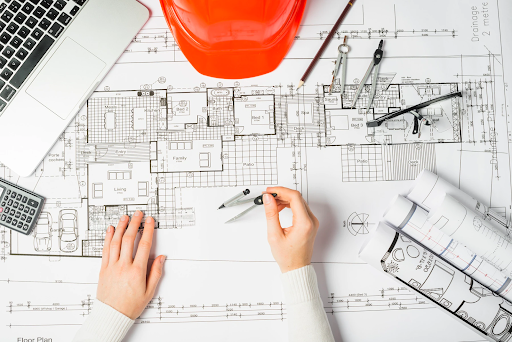Architect Checklist for Upcoming Commercial Projects
Architect Checklist for Upcoming Commercial Projects
Blog Article
Understanding the Diverse Occupation Paths Available for Aspiring Architect
As an aspiring Architect, you have a world of career courses awaiting you. Each path uses one-of-a-kind challenges and opportunities to use your creativity and technical knowledge. Whether you're attracted to traditional design or the nuances of lasting design, there's a specific niche that lines up with your interests. Comprehending these diverse alternatives can shape your specialist journey, but which direction will you pick to discover first?
Typical Architecture: Designing Buildings and Frameworks
Traditional architecture focuses on developing buildings and frameworks that mix performance with visual charm. Your layouts can mirror social heritage, showcasing neighborhood practices while fulfilling modern-day needs.
You'll establish skills in drafting, model-making, and website evaluation, enabling you to imagine and connect your concepts successfully. Engaging with clients, you'll require to recognize their vision and translate it into feasible designs.
Additionally, constructing codes and sustainability methods are essential in your job, ensuring your frameworks are ecologically pleasant and risk-free. As you expand in your career, you'll locate chances in residential, industrial, or perhaps remediation tasks, each offering one-of-a-kind challenges. Accepting standard style leads the way for a satisfying job that pays tribute to the past while forming the future.
Urban Preparation: Shaping Areas and Public Spaces
As a hopeful Architect, you can play a necessary duty as a city coordinator, transforming exactly how areas work and interact. By employing area engagement approaches, you'll assure that residents have a voice fit their setting. Plus, integrating lasting layout principles will aid create areas that not just meet today's demands however also secure the future.
Role of Urban Planners
While numerous may think of architects as the single visionaries behind buildings, city coordinators play a vital role in shaping the broader landscape of neighborhoods and public rooms. They evaluate land use, zoning legislations, and neighborhood requires to produce sustainable settings that improve quality of life. By teaming up with different stakeholders, you'll aid develop parks, transport systems, and houses that advertise social communication and availability. Urban coordinators additionally concentrate on ecological considerations, ensuring that advancements integrate eco-friendly rooms and assistance biodiversity. Your proficiency in spatial design and neighborhood dynamics allows you to picture future development while protecting cultural heritage. In this important duty, you'll directly affect just how people experience their surroundings, making every job an opportunity for favorable adjustment.
Neighborhood Engagement Approaches
Effective community interaction methods are crucial for city planners to guarantee that the voices of locals are heard and valued in the planning procedure. To cultivate purposeful discussion, you need to focus on open discussion forums and workshops where area participants can share their ideas and concerns. By proactively listening and including comments, you'll produce areas that show the neighborhood's requirements, eventually leading to more lasting and effective city environments.
Sustainable Layout Principles
When creating metropolitan areas, integrating sustainable style concepts is essential for creating environments that grow both environmentally and socially. You should begin by concentrating on energy efficiency, using materials that reduce waste and advertise recycling. Think about incorporating green areas, like gardens and parks, to boost biodiversity and boost air high quality. Advertising walkability and public transportation can reduce reliance on automobiles, fostering a healthier community.
Designing with water conservation in mind is also crucial-- consider rainfall gardens and absorptive surfaces to take care of stormwater. Involving area members throughout the planning procedure warranties that the areas you create satisfy their needs and motivate social interaction. By embracing these concepts, you'll contribute to dynamic, lasting city landscapes that profit everyone.

Landscape Architecture: Producing Lasting Outside Atmospheres
As you check out landscape design, you'll find vital design concepts that create beautiful and practical outside rooms. Sustainable practices play a crucial function in making sure these environments thrive while lessening ecological effect. Plus, you'll find a selection of occupation opportunities that enable you to make a real difference in just how people engage with nature.
Layout Principles in Landscape
Comprehending layout principles in landscape style is vital for developing lasting outside environments that balance with nature. You'll require to contemplate aspects like equilibrium, percentage, and range to guarantee your styles really feel natural and welcoming. Incorporating native plants not just boosts biodiversity but likewise lowers water usage, making your landscape resilient. Think of the circulation of space and how people engage with it; paths and seating locations need to invite exploration and relaxation. Additionally, take notice of seasonal adjustments, making with materials that complement the surroundings year-round (Architect). By prioritizing sustainability and looks, you can develop outdoor areas that enhance the community and advertise wellness. Accepting these principles will certainly set a strong structure for your profession in landscape style.
Lasting Practices Summary
Sustainable methods in landscape style not only focus on looks yet also prioritize eco-friendly health and wellness and source conservation. You can make spaces that promote dirt health, such as utilizing organic products and exercising permaculture principles. Ultimately, these practices guarantee your styles profit both individuals and the setting for years to come.
Job Opportunities Expedition
With a solid foundation in sustainable practices, landscape architecture provides a variety of career paths that permit you to make a meaningful effect on the environment. You could function as a landscape developer, developing cosmetically pleasing and useful exterior spaces, or focus on ecological reconstruction, helping to revive broken environments. Urban coordinators often work together with landscape architects to develop environment-friendly spaces in city setups, improving city livability. If you're enthusiastic about education and learning, take into consideration coming to be a landscape design teacher, motivating future generations. Furthermore, you might work with nonprofits concentrated on ecological sustainability or engage in study to introduce brand-new practices. Each course not only forms beautiful environments but additionally promotes a healthier world for future generations.
Lasting Style: Concentrating On Eco-Friendly Practices
As you explore your job in architecture, welcoming green methods can set you apart in an affordable field. Lasting layout focuses on developing buildings that reduce ecological impact while improving passenger well-being. By incorporating eco-friendly materials, energy-efficient systems, and sustainable structure strategies, you'll add to a greener future.
Beginning by gaining understanding of environment-friendly qualifications like LEED or BREEAM, which can reinforce your qualifications. Take into consideration just how all-natural light, air flow, and thermal effectiveness can enhance style. Team up with engineers and ecological consultants visit this site to innovate solutions that lower waste and preserve sources.
Do not neglect the importance of community participation-- appealing neighborhood stakeholders can influence styles that balance with the atmosphere. As customers significantly focus on sustainability, your know-how in green techniques will certainly not just bring in projects however also satisfy your enthusiasm for responsible design. Embrace this critical facet of the career, and watch your career grow.
Historical Preservation: Shielding and Restoring Social Heritage
While you begin on your architectural trip, take into consideration the crucial duty of historical conservation in preserving our social heritage. This area focuses on the defense and repair of substantial structures, websites, and structures that inform the stories of our past. By participating in historical conservation, you'll aid safeguard the building tradition that forms area identification.
As a historical preservation Architect, you'll examine historic importance and analyze the problem of structures. You'll function carefully with historians and guardians to assure authentic repair methods are employed. This occupation course enables you to mix creativity with research study, allowing you to create options that value initial materials and craftsmanship.
Your work not only contributes to sustainability by reusing existing structures but also promotes a sense of pride within communities. Accepting this path will help you become a guardian of history, protecting the stories and aesthetics that enhance our lives.
Inside Architecture: Enhancing Indoor Spaces
Historic conservation and interior design both share a dedication to boosting the built environment, but they concentrate on different facets. While historic preservation highlights preserving a framework's cultural and historical worth, interior style nos in on maximizing indoor spaces for functionality and appearances.
As an aspiring Architect, you'll discover that indoor design enables you to mix creative thinking with technological skills. You'll develop areas that not only look great however also promote comfort and performance. This area includes recognizing exactly how light, shade, and products connect within a room, affecting mood and usability.
You'll work with various projects, from residential homes to commercial workplaces, making certain that each environment fulfills site web the demands of its owners. By focusing on customer experience, you can change interiors into inspiring and functional rooms, making a substantial influence on exactly how people engage with their surroundings. Embrace the possibility to improve indoor environments and form the means individuals work and live.
Industrial Layout: Combining Performance With Visual Appeals
Industrial layout plays an essential duty in producing products that seamlessly mix appearances with performance, guaranteeing that what you make use of daily is not only aesthetically appealing yet likewise practical. As an ambitious Architect, you might involve yourself in this area, concentrating on designing whatever from furnishings to consumer electronic devices. Your work entails comprehending customer demands, materials, and making processes, enabling you to create cutting-edge options that improve day-to-day experiences.
In commercial style, you'll commonly team up with engineers, manufacturers, and marketers, making certain that your styles are not just beautiful but also viable. This job path uses a dynamic environment where creative thinking fulfills functionality, making it a gratifying option for designers interested in shaping the items of tomorrow.
Often Asked Questions
What Educational Qualifications Do I Required to Become an Engineer?
To end up being an architect, you'll require an expert level in design, usually a Bachelor's or Master's. Additionally, you'll need to complete a teaching fellowship and pass the Architect Enrollment Assessment to practice lawfully.
Are There Accreditation Requirements for Various Building Occupation Paths?
Yes, there're certification needs for various building courses. Architect. You'll need to pass tests, total teaching fellowships, and often seek specialized training, depending upon your picked focus, like landscape style, urban style, or historical preservation
What Software Program Abilities Are Crucial for Architects Today?

Exactly How Can I Gain Practical Experience While Researching Design?
You can gain functional experience by interning at architectural companies, getting involved in style competitors, volunteering for area jobs, or teaming up with classmates on real-world jobs. These possibilities boost your abilities and develop beneficial connections in the market.
What Job Opportunities Exist Outdoors Conventional Style Firms?
You can explore different job chances outside conventional architecture firms, like city planning, interior decoration, landscape design, construction administration, property growth, or perhaps roles in sustainability consulting. Each deals one-of-a-kind challenges and benefits.
Whether you're attracted to typical architecture or the nuances of lasting layout, there's a specific niche that lines up with your passions.When designing urban areas, including lasting layout principles is important for developing settings that thrive both ecologically and socially.As you check out landscape design, you'll find crucial layout concepts that develop gorgeous and practical exterior rooms.Recognizing layout Homepage concepts in landscape style is vital for producing lasting outside atmospheres that balance with nature.In industrial design, you'll frequently collaborate with online marketers, engineers, and producers, making certain that your styles are not just stunning however likewise possible.
Report this page